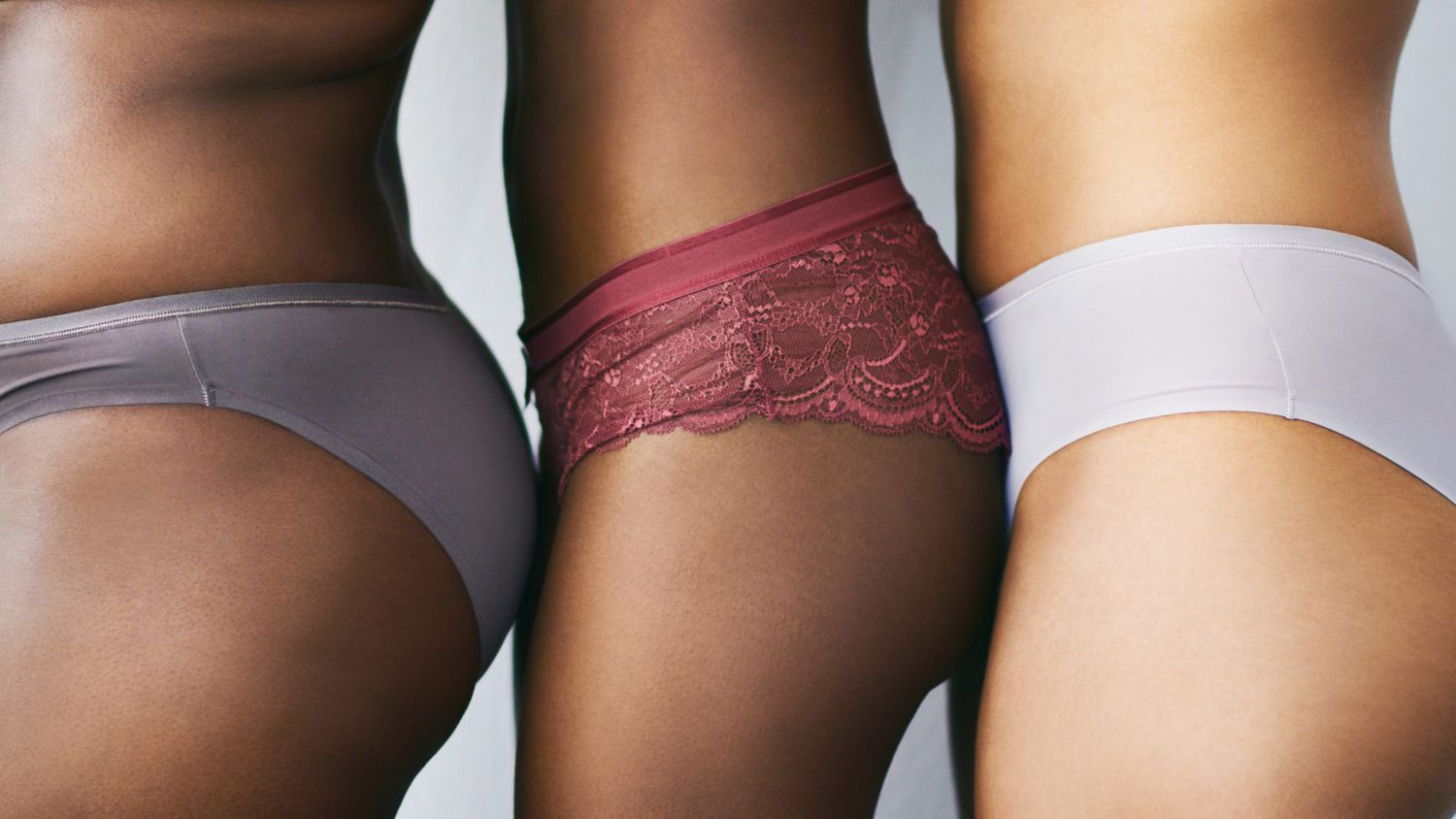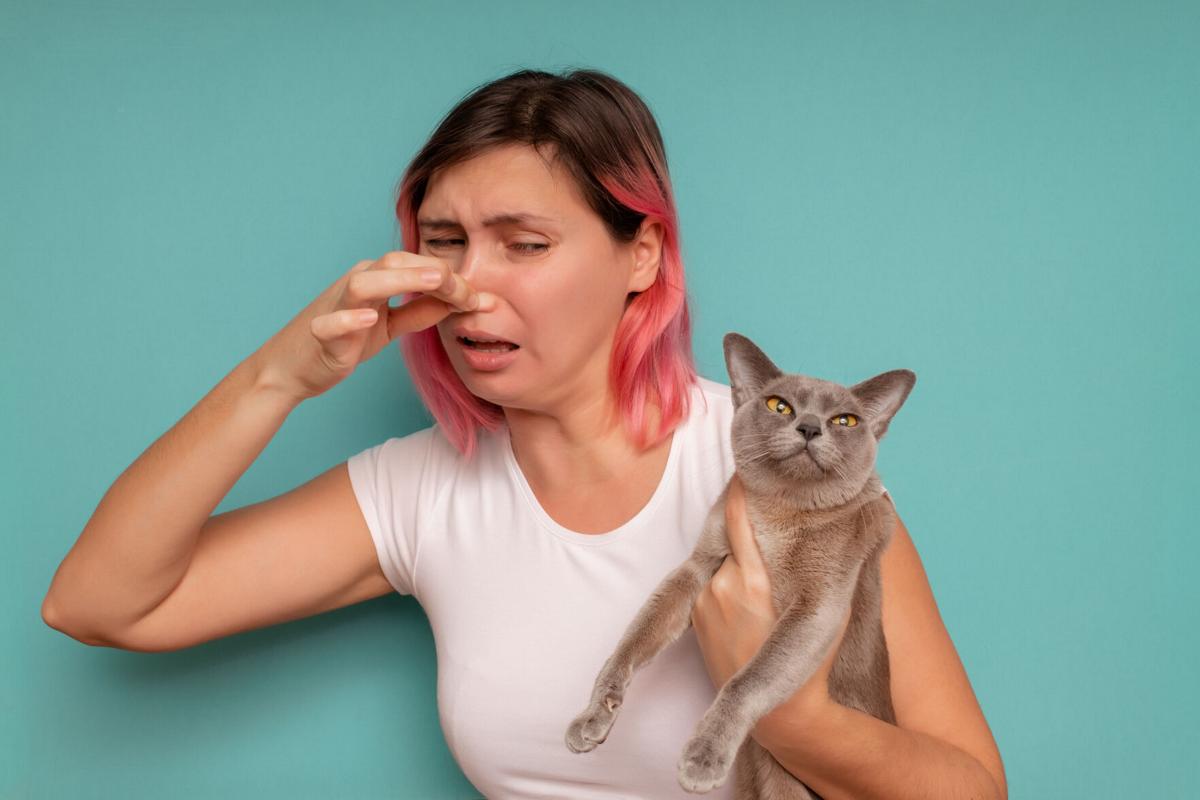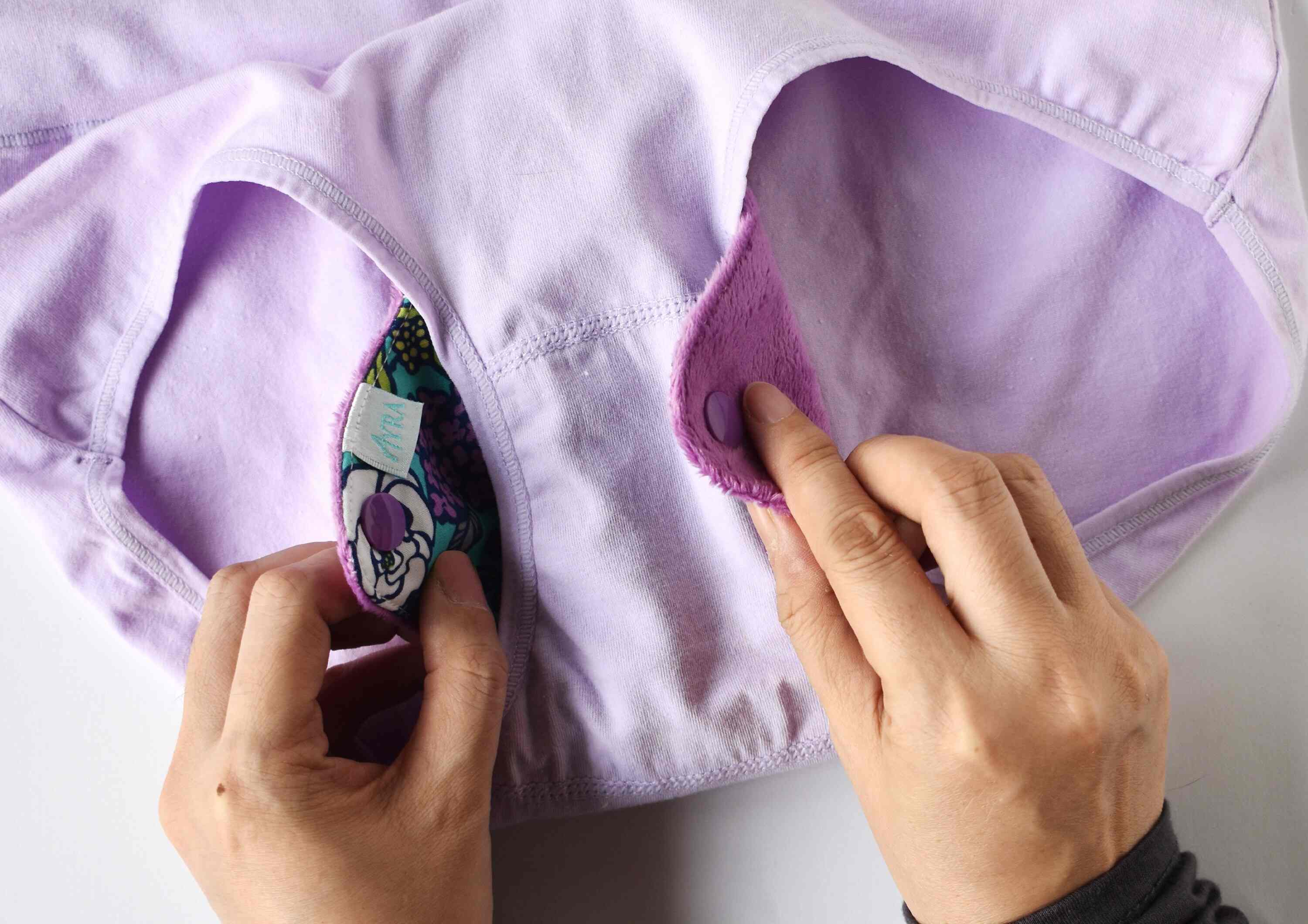

FAQs
Why Are My Panties Bleaching
Modified: August 2, 2023
Find answers to your general questions about why your panties may be bleaching. Learn possible causes and solutions in this informative guide.
(Many of the links in this article redirect to a specific reviewed product. Your purchase of these products through affiliate links helps to generate commission for Under-tec.com, at no extra cost. Learn more)
Table of Contents
Introduction
Picture this: You’re sorting through your laundry, and suddenly you notice an unexpected change in your favorite pair of panties – they’re bleached! How did this happen? Why are your panties experiencing color discoloration? Don’t worry; you’re not alone. Many people have encountered the phenomenon of panty bleaching and have wondered about its causes and potential implications.
Panty bleaching refers to the process of color fading or discoloration that occurs on underwear, specifically panties. It can be a puzzling and frustrating experience, leaving you wondering why your undergarments are affected and how to prevent it from happening again.
In this article, we will delve into the world of panty bleaching, exploring the common causes behind this phenomenon, understanding the chemical reactions responsible, addressing potential health concerns, and providing tips for prevention and treatment. So, if you’ve ever wondered why your panties are bleaching, read on to uncover the intriguing secrets behind this curious phenomenon.
Understanding the Phenomenon of Panty Bleaching
Panty bleaching may seem like a mysterious occurrence, but in reality, it can be explained by several factors. To understand why your panties might be experiencing discoloration, it’s important to explore these underlying causes.
One primary factor that contributes to panty bleaching is the presence of certain chemicals in hygiene and personal care products. Ingredients such as bleach, hydrogen peroxide, and even some laundry detergents can cause the colors in fabrics to fade or change. When we wear underwear, these chemicals can come into contact with the fabric, leading to discoloration over time.
Another potential cause of panty bleaching is the interaction between sweat and fabric dyes. Sweat contains compounds that can react with the dyes present in the fabric, causing the colors to fade or alter. This reaction is often intensified by factors such as heat and friction, which are commonly encountered in everyday activities like exercise or wearing tight-fitting clothing.
It’s worth mentioning that some fabrics are more prone to bleaching than others. Certain synthetic materials, like polyester or nylon, are generally more susceptible to color fading compared to natural fibers like cotton. This is because the dye absorption and retention properties of synthetic fibers differ from those of natural fibers, making them more vulnerable to chemical reactions and discoloration.
Lastly, external environmental factors can also contribute to panty bleaching. Sunlight, for example, contains UV rays that can break down the dye molecules in fabrics, resulting in color fading or discoloration. Additionally, exposure to chlorine in swimming pools can have a similar effect on panties, causing them to bleach or lose their original color.
By understanding these underlying causes, you can begin to take proactive measures to prevent further panty bleaching. In the next section, we will explore some preventive measures that can help preserve the vibrant colors of your cherished underwear.
Common Causes of Panty Bleaching
Panty bleaching can occur due to a variety of reasons, including the following common causes:
- Chemical-based personal care products: Many personal care and hygiene products, such as body lotions, creams, and even feminine hygiene products, contain chemicals like bleach or hydrogen peroxide. When these chemicals come into contact with the fabric of your panties, they can cause color fading or discoloration over time.
- Laundry detergents: While laundry detergents are meant to clean and freshen your clothes, some detergents may contain harsh chemicals that can affect the color of your underwear. Certain enzymes and brightening agents present in detergents can react with fabric dyes, resulting in color changes or fading.
- Sweat and body oils: The natural compounds in sweat and body oils can interact with the dyes in your panties, leading to color alterations. Factors such as heat, friction, and extended periods of wear can exacerbate this reaction, accelerating the bleaching process.
- Fabric type: Different fabrics react differently to chemical agents, making some more prone to bleaching than others. Synthetic fabrics like polyester or nylon are often more susceptible to color fading, as they tend to have less dye absorption and retention capabilities compared to natural fibers like cotton.
- Environmental factors: Exposing your panties to sunlight or chlorinated water can also contribute to color fading or discoloration. The UV rays in sunlight can break down the dye molecules, leading to bleaching. Similarly, the chlorine found in swimming pools can chemically react with fabric dyes, resulting in color changes.
It’s important to note that while these are common causes of panty bleaching, individual experiences may vary. Some people may be more susceptible to color fading due to certain lifestyle factors, hormonal changes, or personal care product usage. Understanding these causes can help you make informed choices and take preventive measures to maintain the longevity and vibrancy of your panties.
Chemical Reactions and Panty Discoloration
Panty discoloration occurs as a result of chemical reactions that take place between various substances and the fabric of the underwear. Understanding these chemical reactions can shed light on why your panties may be experiencing color fading or discoloration.
One common chemical reaction that occurs is oxidation. Oxidation is the process by which a substance loses electrons, resulting in the alteration of its chemical properties. For example, when bleach or hydrogen peroxide comes into contact with the dyes in fabric, it can lead to oxidation and color fading or bleaching.
Another chemical reaction that can cause panty discoloration is hydrolysis. Hydrolysis is the process in which a water molecule reacts with a chemical compound, leading to the breakdown of that compound. When sweat or body oils interact with the dyes in your underwear, a hydrolysis reaction can take place, causing the colors to fade or change.
Chemical reactions also occur between certain compounds found in personal care products and the fabric of your panties. For example, fragrances or perfumes that contain high levels of alcohol can react with the dyes in the fabric, resulting in color alterations.
Additionally, detergents used during the washing process can contribute to panty discoloration. Some laundry detergents contain enzymes and brightening agents that can react with fabric dyes. This reaction can lead to color changes or fading over time.
It’s important to note that the extent of panty discoloration will depend on various factors such as the concentration of the chemical substance, the type of fabric, and the duration of exposure. While some chemical reactions may occur gradually over time, others can occur quickly, resulting in immediate color changes.
By understanding these chemical reactions, you can take preventive measures to minimize or avoid panty discoloration. This includes choosing gentle detergents, avoiding personal care products that contain harsh chemicals, and being mindful of environmental factors such as sunlight and chlorine exposure.
Health Concerns and Panty Bleaching
While panty bleaching may be concerning from an aesthetic standpoint, it’s also important to consider any potential health implications associated with this phenomenon. Although panty discoloration itself is generally harmless, there are a few health concerns that you should be aware of.
One potential issue is skin sensitivity or irritation. When underwear comes into contact with chemicals, such as bleach or harsh detergents, it can cause skin reactions in some individuals. These reactions may manifest as redness, itching, or rashes in the panty area. If you experience any discomfort or irritation, it is advisable to switch to hypoallergenic or fragrance-free products and consult a healthcare professional if symptoms persist.
Furthermore, some chemicals present in personal care products or detergents may disrupt the natural pH balance of the vagina. The vagina has an acidic environment to help protect against infections and maintain a healthy microbial balance. Disrupting this balance can potentially lead to bacterial overgrowth or yeast infections. To minimize the risk, it is recommended to opt for mild, pH-balanced cleansers when washing panties and avoid excessive use of scented products in the panty area.
Another concern is the potential presence of toxic substances in bleaching agents. Certain bleaching products contain chlorine-based compounds or other harmful chemicals that can be absorbed through the skin. Prolonged exposure to these substances may increase the risk of adverse health effects. Therefore, it is important to read labels carefully, follow usage instructions, and consider natural alternatives when bleaching underwear.
Lastly, the discoloration of panties can sometimes be an indicator of an underlying health issue. Certain medical conditions, such as vaginal infections or abnormal vaginal discharge, can cause changes in panty color or appearance. If you notice persistent changes or abnormalities, it is advisable to consult a healthcare professional for a proper diagnosis and appropriate treatment.
Overall, while panty bleaching itself may not pose significant health risks, it is important to be mindful of potential skin sensitivities, pH imbalances, and the products you use when washing or treating your underwear. Prioritizing gentle and hypoallergenic options can help maintain both the health and appearance of your panties.
Preventive Measures for Panty Discoloration
Preventing panty discoloration requires adopting a proactive approach and implementing preventive measures. By taking these precautions, you can help preserve the vibrant colors of your underwear and reduce the risk of bleaching. Here are some preventive measures to consider:
- Choose gentle detergents: Opt for mild, fragrance-free detergents specifically formulated for delicate fabrics. Avoid using detergents that contain harsh chemicals or brightening agents, as they can contribute to color fading or discoloration.
- Separate colored panties: When doing laundry, separate your colored panties from other garments to prevent color transfer. This can help preserve the original color of your underwear and prevent unwanted bleaching.
- Wash in cold water: Washing your panties in cold water can help minimize color fading. Hot water can cause dyes to break down faster and increase the likelihood of discoloration. Additionally, cold water saves energy and helps extend the life of your underwear.
- Limit bleach usage: If you use bleach for laundry purposes, use it sparingly and in accordance with the instructions on the label. Consider using bleach alternatives or natural whitening agents, such as lemon juice or baking soda, which are gentler on fabrics and less likely to cause discoloration.
- Avoid excessive exposure to sunlight: Ultraviolet (UV) rays from direct sunlight can cause fabric dyes to break down. Whenever possible, dry your panties indoors or in shaded areas to minimize sun exposure. If you need to line dry them outside, turn them inside out to protect the color.
- Be mindful of personal care product usage: Avoid using personal care products that contain harsh chemicals, such as bleach or alcohol, near your intimate areas. Opt for gentle, pH-balanced cleansers and fragrance-free products to minimize the risk of irritation and chemical reactions with the fabric.
- Follow care instructions: Pay attention to the care labels on your underwear and follow the recommended washing instructions. Different fabrics require specific care, and adhering to these instructions can help maintain the color and quality of your panties.
By incorporating these preventive measures into your daily routine, you can help prolong the life and appearance of your underwear. Taking care of your panties not only ensures their longevity but also helps you feel confident and comfortable in your intimate apparel.
Tips for Treating Panties Affected by Bleaching
If your panties have already been affected by bleaching or discoloration, there are a few tips and tricks you can try to help restore their appearance. While it may not be possible to completely reverse the effects of bleaching, these methods can help minimize the visibility of discoloration:
- Dye the panties: If the discoloration is significant and you are willing to try a DIY solution, you can consider dyeing your panties. There are fabric dyes available in various colors and shades that can help blend the bleached areas with the original color. Follow the instructions on the dye package carefully for best results.
- Spot treat with color-safe bleach: For minor discoloration, you can try spot treating the affected areas with color-safe bleach. However, it is crucial to use a bleach specifically formulated for colored garments and follow the instructions provided. Test a small, discreet area of the fabric first to ensure that it does not cause further damage.
- Cover up the discoloration: If the discoloration is limited to a small area or on the back side of the panties, you can use creative techniques to cover it up. Consider adding a decorative patch, appliqué, or embroidery to conceal the bleached spots and give your panties a unique twist.
- Use fabric markers or fabric paint: Another option for camouflaging bleached areas is to use fabric markers or fabric paint. Match the color as closely as possible and carefully apply it to the affected areas. This method requires precision and patience to achieve a natural blend.
- Embrace the new look: Sometimes, accepting the bleached spots as part of your panties’ unique character is the best approach. Their altered appearance can create an interesting and fashionable aesthetic. Embrace the new look and enjoy wearing your distinctively styled underwear.
It’s important to note that these methods may not be a perfect solution, and results may vary depending on the extent of bleaching and the fabric type. Exercise caution when attempting any treatment method and always consider the potential impact on the fabric’s integrity.
Remember, prevention is key to maintaining the original color and appearance of your panties. By implementing preventive measures and proper care techniques, you can minimize the risk of bleaching and ensure the longevity of your intimate apparel.
FAQs about Panty Bleaching
Curious about panty bleaching? Here are some frequently asked questions that can help you gain a better understanding of this phenomenon and how to deal with it.
-
Can all types of panties bleach?
While any type of panty can potentially bleach, synthetic fabrics like polyester or nylon are generally more susceptible to discoloration compared to natural fibers such as cotton. Synthetic fabrics often have less dye absorption and retention capabilities, making them more vulnerable to chemical reactions that cause bleaching. -
Are there any health risks associated with panty bleaching?
Panty bleaching itself is not a significant health risk. However, some individuals may experience skin irritation or sensitivities due to the chemicals present in detergents or personal care products. Additionally, the disruption of the pH balance in the vaginal area can potentially lead to bacterial overgrowth or yeast infections. It is important to be mindful of the products you use and to consult a healthcare professional if you experience any discomfort or persistent issues. -
Is panty bleaching reversible?
The extent of reversibility depends on various factors such as the severity of the bleaching, the fabric type, and the treatment method applied. While some methods, like dyeing or spot treating, can help minimize the visibility of bleached areas, it may not be possible to completely restore the original color. It is best to focus on preventive measures and proper care techniques to minimize the risk of panty bleaching. -
Can I prevent panty bleaching?
Yes, there are several preventive measures you can take to reduce the likelihood of panty bleaching. These include using gentle detergents, washing in cold water, separating colored panties from other garments, and limiting exposure to harsh chemicals. Being mindful of personal care product usage and avoiding excessive exposure to sunlight and chlorine can also help preserve the color and appearance of your underwear. -
What should I do if my panties bleach?
If your panties have already experienced bleaching, you can try various methods to mitigate the appearance of discoloration, such as dyeing, spot treating, or covering up the affected areas. However, it is important to note that these methods may not provide perfect results and may depend on the severity of bleaching and fabric type. Embracing the new look of your panties may be another option, as the bleached spots can add a unique and fashionable touch.
By understanding these FAQs and implementing preventive measures, you can minimize the risk of panty bleaching and ensure the longevity and appearance of your underwear.
Conclusion
Panty bleaching can be a frustrating and mystifying experience, but understanding its causes and taking preventive measures can help minimize the risk of color fading or discoloration. From chemical reactions to environmental factors, several elements contribute to the phenomenon of panty bleaching.
By being mindful of the chemicals present in personal care products and detergents, choosing gentle cleaners, and washing panties in cold water, you can minimize the likelihood of bleaching. Separating colored panties from other garments and avoiding excessive exposure to sunlight and chlorine can also help preserve their original color.
If your panties have already experienced bleaching, treating the affected areas with dye, spot treatments, or creative cover-ups can help restore their appearance to some extent. However, it’s important to note that complete reversal may not be possible in all cases.
Remember to prioritize your health and well-being when dealing with panty bleaching. Be mindful of potential skin sensitivities and pH imbalances, and consult a healthcare professional if any discomfort or persistent issues arise.
Ultimately, by implementing preventive measures, following proper care techniques, and embracing the unique character of your panties, you can maintain their vibrant colors and enjoy comfortable and aesthetically pleasing underwear.










